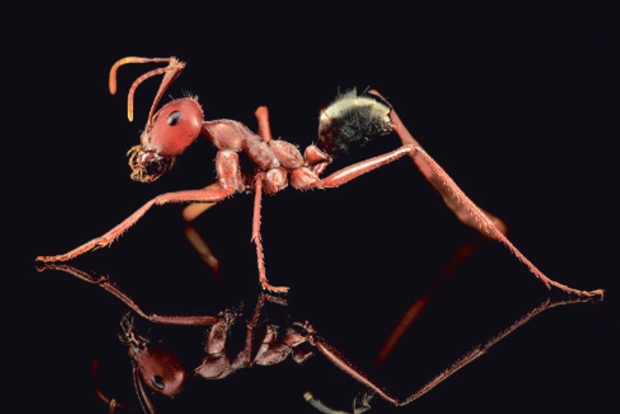Begin typing your search...
Nature’s foot soldiers: In praise of ubiquitous tiny ants
It is telling, the entomologist Eleanor Spicer Rice writes in her introduction to a new book of ant photography by Eduard Florin Niga, that humans looking downward on each other from great heights like to describe the miniaturised people we see below us as looking “like ants.”

Chennai
By this we mean faceless, tiny, swarming: an indecipherable mass stripped of individuality or interest.
Intellectually, though, we can recognise that each scurrying dot is in fact a unique person with a complicated and interconnected life, even if distance appears to wipe away all that diversity and complexity. So then why, Dr. Rice asks, don’t we apply the same logic to the ants we’re comparing ourselves to?
We share our world with at least 15,000 unique species of ants — although this is surely an underestimate, as we have no way to count the number of species still unknown to science. It is hard to express how ubiquitous they are. If you were to put all the animal life in a Brazilian rainforest on a scale, more than one-quarter of the weight would come just from ants. Even the sidewalks of New York City — where pedestrians walk unknowingly above armies of pavement ants that undertake huge, deadly turf wars each spring, dismembering each other in epic battles for territory — are teeming. One study found an average of 2.3 ant species on a given city median, doing the invisible work of making fallen potato chips and hot dogs disappear by the pound. Even in our densest habitations, there are orders of magnitude more of them than there are of us.
If distance has kept us from really seeing the ants with which we share our world, Niga’s photographs in “Ants: Workers of the World” are an antidote. With macrophotography that shows every hair (a surprising amount of it), every spiracle (the pores in their exoskeletons through which ants breathe) and every facet of their compound eyes, the images replace our accustomed looking-down-from-a-skyscraper view with intimate, face-to-face portraits. We are longtime neighbours, belatedly introduced.
At this level, ants have such a wide variety of shapes and styles and faces that they quickly begin to feel not just like individuals, but like people. It’s hard not to anthropomorphise them, as when we meet Messor barbarus, a grain-eating ant with flattened mandibles and a scrunched-looking exoskeleton that gives it a face like a very old, kind man. In other cases, further research teaches us not to trust our first impressions. Cephalotes atratus looks like a terrifying doppelgänger of the villain Sauron in his armour, but scientists believe that its intimidating spikes are meant for aerodynamic purposes: the better to glide about in a forest canopy. Polyergus is another cute ant, with a wide face, round eyes and drooping mandibles that look a bit like a smile, but in fact its jaws are so sharp that the species cannot effectively raise its own larvae. Instead, it raids another ant species’ colonies for workers that it enslaves to nursemaid its young.
All these differences help us see ants as they really are: rich in diversity, earned over millions of years of evolution as they adapted to a world’s worth of habitats, ecosystems and survival strategies.
Jarvis is a reporter with NYT©2021
The New York Times
Visit news.dtnext.in to explore our interactive epaper!
Download the DT Next app for more exciting features!
Click here for iOS
Click here for Android
Next Story



